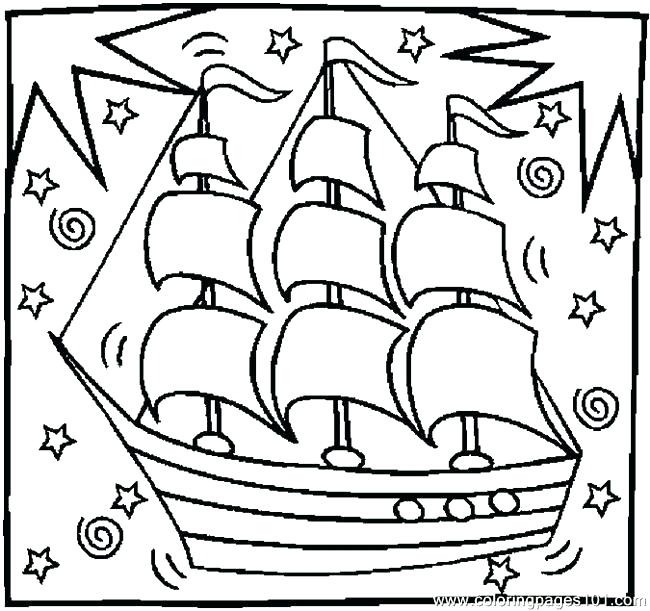
The Italian explorer is even celebrated every October during a federal holiday named after him.īut the man credited for discovering the “New World” has long been considered a contentious figure in US history for his treatment of the indigenous communities he encountered and for his role in the violent colonization at their expense.ĭozens of cities and states – such as Minnesota, Alaska, Vermont and Oregon – have already replaced Columbus Day with Indigenous People’s Day.

Students are taught that Columbus is the one who discovered the Americas, sailing across the Atlantic in his three ships: The Niña, Pinta and Santa Maria. That rhyme has long been how American students were introduced to Christopher Columbus in elementary school. After this, there’s no log of La Niña’s travel, but it’s thought she registered approximately 25,000 nautical miles under the command of Christopher Columbus.“In 1492, Columbus sailed the ocean blue.” In 1500, she set sail from Santo Domingo, Dominican Republic, and then in 1501, she made a trading voyage to the Pearl Coast on the island of Cubagua, in Venezuela. La Niña returned to Hispaniola in 1498, serving as an advance guard of Christopher Columbus’ third voyage. He stole a small boat, rowed back to La Niña, and he and the remaining crew then sailed to Cadiz. Niña’s captain at the time, Alonso Medel, managed to escape from the pirates with a few of his men. The ship was captured by pirates when disembarking from Cagliari, and was then taken to Sardinia. Niña’s next journey was an unauthorised voyage to Italy’s capital, Rome. She became the flagship for the exploration of Cuba, the biggest island of them all, and was subsequently the only ship to withstand the 1495 hurricane. Six months after this, La Niña found herself joining a fleet of seventeen ships for the second journey to Hispaniola, in the Caribbean. See Above: A map highlighting the route of Christopher Columbus’ first expedition.

A month later, on the 4th March 1493, La Niña reached Lisbon.
#CHRISTOPHER COLUMBUS SHIPS SERIES#
A storm was tossing the ship across the waves, and Columbus subsequently ordered his crew to take a series of vows to perform specific acts when they returned to Spain, such as religious pilgrimages. This is a small archipelago in the North Atlantic, around 900 miles west of Portugal’s capital, Lisbon. This was in January of 1493, and here he encountered the Ciguayos the only group of natives who were violently resistant towards Columbus and his men.Ĭolumbus then set sail for Spain, and La Niña was almost capsized in February 1493, in the east of the Azores. His last stop of the voyage was in the Bay of Rincon, in northeast Hispaniola. Christopher Columbus then founded the settlement of La Navidad, in present-day Haiti. A native chieftain, Guacanagari, accepted Columbus and granted him permission to leave some of his men behind. Columbus decided to use the wreckage as a source for target practice for their cannons, to impress the local people. The Santa Maria ran aground on Christmas Day of that year, and there was no other choice but to abandon her. Columbus also noted how primitive they were in terms of warfare, and is believed to have said, “The people here are simple in war-like matters… I could conquer the whole of them with fifty men, and govern them as I pleased.”Īfter this, Columbus ventured to the northern coast of Cuba in late October, before journeying to Hispaniola in December. He later imprisoned the locals, and forced them to guide him to the source of the gold. He called the inhabitants Indians, and was curious in regard to their golden ear ornaments.

Columbus would go on to state he had already spotted the land, and so he’d be given the lifetime pension promised to whomever first saw land by King Ferdinand and Queen Isabella.Ĭhristopher Columbus named this island San Salvador, and it’s now known as the Bahamas. It was on the 7th October 1492 that the crew spotted a flock of birds, signifying their proximity to land, and a few days later the captain of the Pinta, Martin Alonso Pinzon, confirmed the land sighting and signalled Columbus. He departed from Palos de la Frontera with his three ships, and he was actually aboard the Santa Maria, the largest of the three. On Christopher Columbus’ first voyage, La Niña carried a crew of 26 men, and she was captained by Vincente Yanez Pinzon, a famed Spanish navigator. There are conflicting accounts regarding the number of sails Niña had, with some claiming there to have been three, and others four. Whilst there isn’t much, if any accurate documentation of Niña’s design, the ship is thought to have weighed around 60 tonnes, with a 15-metre deck. See Above: Christopher Columbus bidding farewell to Isabella I, the Queen of Spain, on his departure for the New World, August 3, 1492.Īs previously mentioned, Niña was fitted with Latin sails at first, but was later re-rigged with square sails for optimised performance in the ocean.


 0 kommentar(er)
0 kommentar(er)
